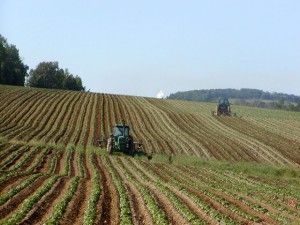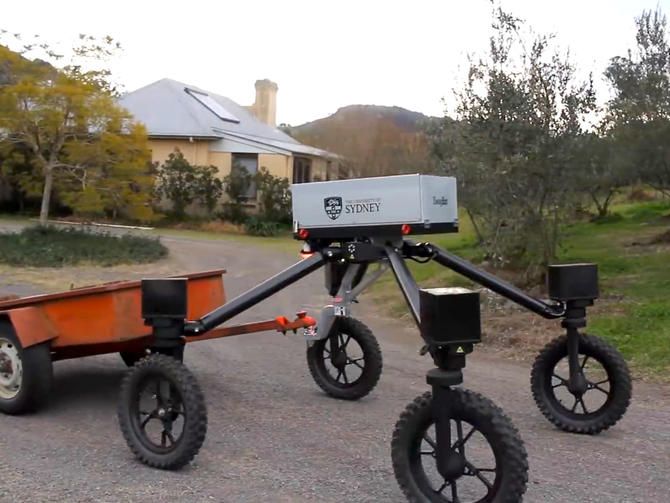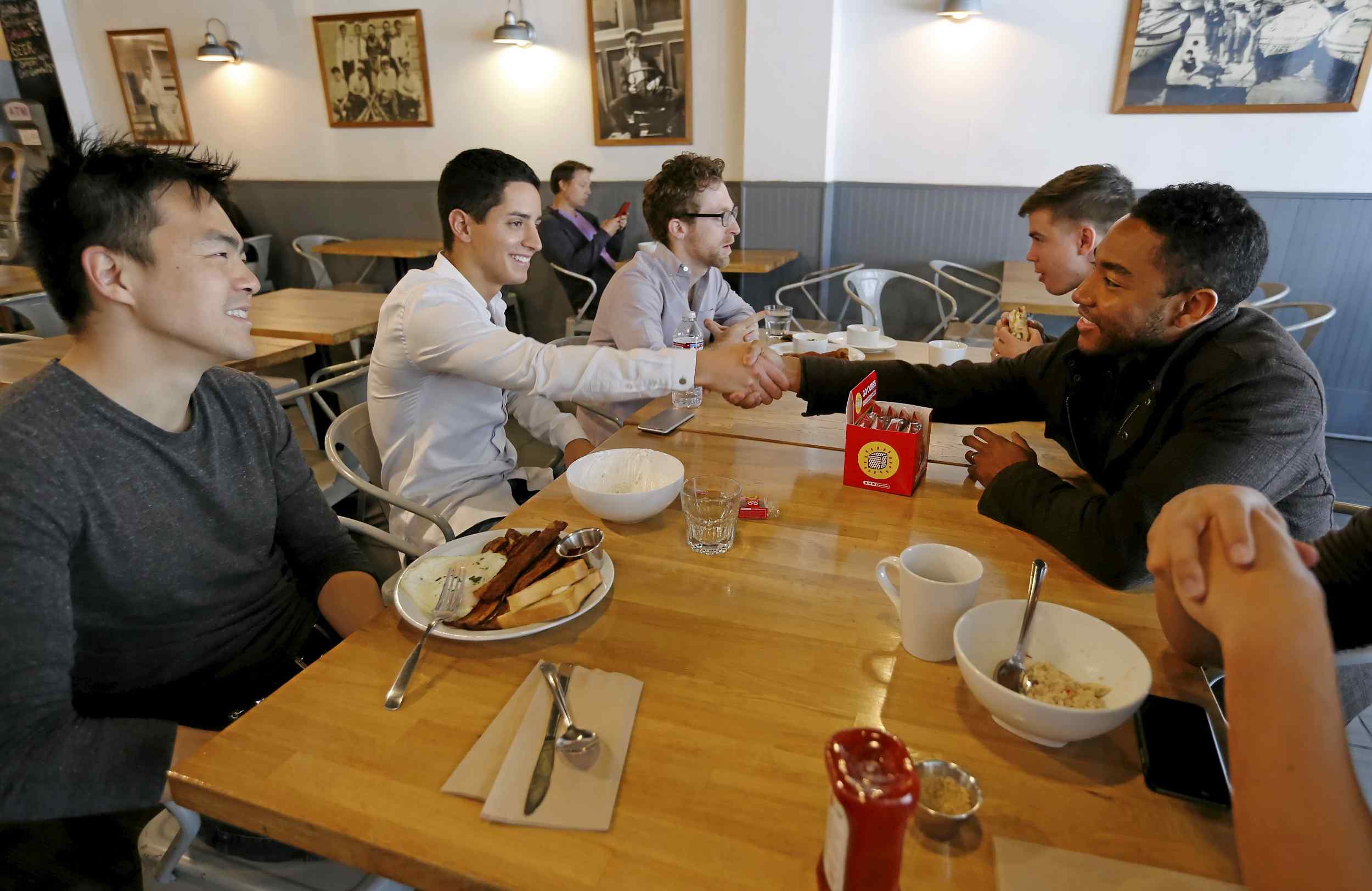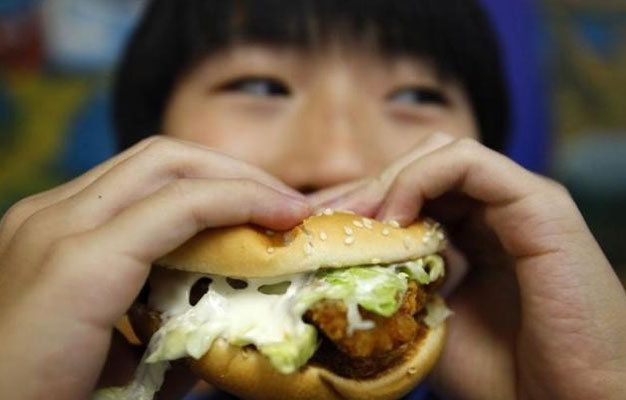Archive for the ‘food’ category: Page 307
Jul 20, 2016
Musings on Synthetic Biology and Crop Disease Resistance
Posted by Karen Hurst in categories: bioengineering, biotech/medical, food, robotics/AI
Why Plants? Part III – Rise of The Plant Machines by Orlando de Lange.
Everyone talks about the rise of the robots. What about the rise of the “Vegetation/ Plant Machines?”
In part 3 of our series on plant synthetic biology, Orlando de Lange (@SeaGreenODL) of The New Leaf blog introduces how synbio approaches are being used to develop novel disease resistant crops, overcoming some of the challenges faced by monoculture farming.
Continue reading “Musings on Synthetic Biology and Crop Disease Resistance” »
Jul 19, 2016
Australian robot gets put to work, herds sheep and cows (Tomorrow Daily 393)
Posted by Karen Hurst in categories: food, health, robotics/AI, sustainability
Definitely need this for the farm.
This robot cowboy not only herds cattle, soon it will also monitor the herd’s health and alert ranchers to any injuries or illness to livestock.
Jul 19, 2016
Why the Cost of Living Is Poised to Plummet in the Next 20 Years
Posted by Shailesh Prasad in categories: economics, education, employment, food, government, habitats, health, robotics/AI, transportation
Powered by developments in exponential technologies, the cost of housing, transportation, food, health care, entertainment, clothing, education and so on will fall, eventually approaching, believe it or not, zero.
People are concerned about how AI and robotics are taking jobs, destroying livelihoods, reducing our earning capacity, and subsequently destroying the economy.
In anticipation, countries like Canada, India and Finland are running experiments to pilot the idea of “universal basic income” — the unconditional provision of a regular sum of money from the government to support livelihood independent of employment.
Continue reading “Why the Cost of Living Is Poised to Plummet in the Next 20 Years” »
Jul 18, 2016
5 Reasons To ‘Farm’ In Low-Earth Orbit
Posted by Bruce Dorminey in categories: food, habitats, space travel, sustainability
Large Earth-orbiting greenhouses will someday likely be as commonplace as peanut acreage on Georgia’s coastal plains.
Low-Earth orbit (LEO) would hardly appear to be the best place to take up farming. But both NASA and the burgeoning commercial space industry are already planning for a time when in addition to on-orbit space hotels and new research stations, there will also be Earth-orbiting greenhouses. Such structures will provide a horn of plenty for growing numbers of LEO residents and astronauts venturing beyond Earth orbit to the Moon, Mars or even the Main Asteroid Belt.
The initial case for LEO agriculture would be to feed a growing population of space-dwellers — either using a greenhouse that remained permanently attached to the LEO habitat, or a greenhouse that was free-flying and uncrewed.
Jul 14, 2016
Transhumanist Terminology
Posted by Shailesh Prasad in categories: bioengineering, computing, cryonics, cyborgs, encryption, existential risks, food, genetics, information science, life extension, nanotechnology, neuroscience, quantum physics, robotics/AI, singularity, transhumanism
Transhuman Terminology.
ADHOCRACY
AEONOMICS
A-LIFE
AGORIC SYSTEM
AI-COMPLETE ALEPH ALGERNON AMORTALIST ARACHNIOGRAPHY ARCH-ANARCHY ARCOLOGY ARROW IMPOSSIBILITY THEOREM ARTILECT ASEX ASIMORT ASIMOV ASSEMBLER ATHANASIA ATHANOPHY ATHEOSIS AUGMENT AUTOEVOLUTIONIST AUTOMATED ENGINEERING AUTOMORPHISM AUTOPOTENT AUTOSCIENT BABY UNIVERSE BASEMENT UNIVERSE BEAN DIP CATASTROPHE BEANSTALK BEKENSTEIN BOUND BERSERKER BETELGEUSE-BRAIN BIG CRUNCH BINERATOR BIOCHAUVINISM BIOLOGICAL FUNDAMENTALISM BIONICS BIONOMICS BIOPHILIAC BIOSTASIS B-LIFE BLIGHT BLIND UPLOADING BLUE GOO BOGOSITY FILTER BORGANISM BREAKEVEN POINT BROADCATCHING BRUTE FORCE UPLOADING BUSH ROBOT CALCUTTA SYNDROME CALM TECHNOLOGY CALORIE RESTRICTION CASIMIR EFFECT CEREBROSTHESIS CHINESE ROOM CHRONONAUTS CHURCH-TURING THESIS COBOTS COMPUFORM COMPUTRONIUM CONCENTRATED INTELLIGENCE CONSILIENCE CONNECTIONISM CONTELLIGENCE CONTINUITY IDENTITY THEORY COSMYTHOLOGY CRYOBIOLOGY CRYOCRASTINATE CRYOGENICS CRYONICS CRYONIC SUSPENSION CRYPTO ANARCHY CRYPTOCOSMOLOGY CYBERCIDE CYBERFICTION CYBERGNOSTICISM CYBERIAN CYBERNATE/CYBERNIZE CYBERSPACE/CYBERMATRIX CYBRARIAN CYPHERPUNK DEANIMALIZE DEATH FORWARD DEATHISM DEEP ANARCHY DEFLESH DIGITAL PSEUDONYM DIAMONDOID DISASSEMBLER DISASTERBATION DISTRIBUTED INTELLIGENCE DIVERGENT TRACK HYPOTHESIS DIVERSITY IQ DIVIDUALS DOOMSDAY ARGUMENT DOWNLOAD DRYWARE DUBIFIER DYSON SPHERE ECOCALYPSE ECTOGENESIS
EMBRYOMEME
EMULATION
ENHANCED REALITY
ENVIROCAPITALISM
EPHEMERALISTS
E-PRIME
ESCALATORLOGY
THE ETERNAL LIFE POSTULATE
EUPSYCHIA
EUTHENICS
EVOLUTIONARILY STABLE STRATEGY (ESS)
EVOLUTURE
EXCONOMICS
EXES
EXFORMATION
EXISTENTIAL TECHNOLOGY
EXOPHOBIA
EXOSELF
EXTROPIAN
EXTROPIATE
EXTROPIC
EXTROPOLIS
EXTROPY
FACULTATIVE ANAGOROBE
FAR EDGE PARTY
THE FERMI PARADOX
FEMTOTECHNOLOGY
FLATLANDER
FLUIDENTITY
FOGLET
FORK
FREDKIN’S PARADOX
FUNCTIONAL SOUP
FUTIQUE
FUTURE SHOCK
GALAXY BRAIN
GAUSSIAN
GENEGENEERING
GENETIC ALGORITHM
GENIE
GREEN GOO
GÖDEL’S THEOREM
GOLDEN GOO
GREAT FILTER, THE
GREY GOO
GUY FAWKES SCENARIO
HALLUCINOMEMIC
HIVE COMPUTING
HOMORPH
HPLD
HYPERTEXT
HYPONEIRIA
HYPOTECH
Jul 13, 2016
Human genes engineered into GMO rice have being grown in Kansas
Posted by Karen Hurst in categories: biotech/medical, food
Ready for the strange? Here you go.
If you aren’t already purchasing organic or GMO-free rice, you should be. Rice that has been engineered with actual human genes is on its way to a supermarket near you. In Junction City, Kansas, this human gene-tainted rice is being grown on 3,200 acres by the biotechnology company Ventria Bioscience.
Ventria began cultivating this rather horrifying product in 2006 with human liver genes. What exactly was the purpose of this, you ask? Their intention was to harvest the artificial enzymes produced by the rice and use them in pharmaceuticals. Ventria has taken one of the most widely grown and consumed crops and turned it into the base for new prescription drugs — all with USDA approval, of course.
Continue reading “Human genes engineered into GMO rice have being grown in Kansas” »
Jul 13, 2016
Brain ‘hacking’: Entrepreneurs turn to fasting and ‘smart drugs’
Posted by Karen Hurst in categories: biotech/medical, food, neuroscience
The SV trend.
Employees at San Francisco startup Nootrobox don’t eat on Tuesdays.
The weekly fast isn’t an extreme money-saving move by a scrappy, bootstrapping company. Instead, Nootrobox team members swear withholding food for 36 hours — they stop eating Monday night — improves their workplace focus and concentration.
Continue reading “Brain ‘hacking’: Entrepreneurs turn to fasting and ‘smart drugs’” »
Jul 13, 2016
Eating Sugar And Fatty Foods Is As Bad As Doing Drugs
Posted by Karen Hurst in categories: biotech/medical, food, health, neuroscience
Is it time for rehab for junk food junkies?
Apparently, all the burgers and smoothies you’re consuming cause your brain to forget to stop eating even when you’re full.
Can you relate to midnight cravings and the feeling of perpetual hunger? Do you resort to grabbing fast food on the fly or eating out of a tub of ice cream while you’re bored around the house?
Continue reading “Eating Sugar And Fatty Foods Is As Bad As Doing Drugs” »
















